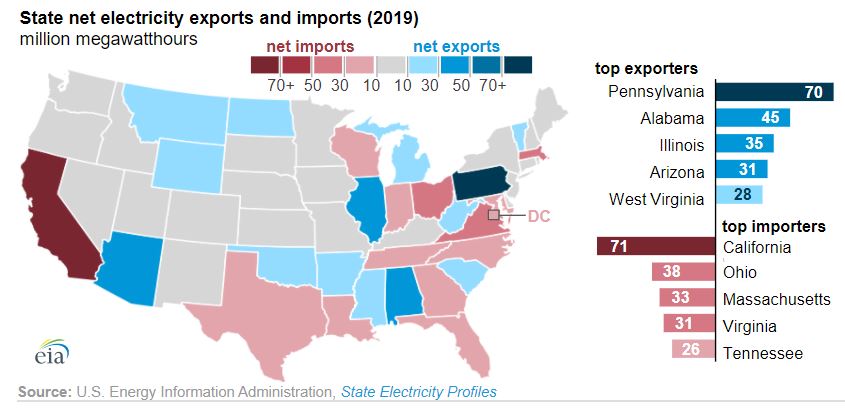
On a percentage basis, Virginia is the fourth largest electricity importer in the United States, following California, Ohio and Massachusetts, according to data published this week by the U.S. Energy Information Administration. On a net basis, the Old Dominion imports 31% of its electricity from other states.
Why does that matter? That’s economic activity, along with local multiplier effects, that we’re shipping outside the state.
Environmentalists argue that if Virginia moves to a 100% renewable electric grid, most of that electricity will be produced in the form of solar farms and wind turbines located within the state, paying leases to landowners, generating taxes for state and local governments, and supporting Virginia jobs. I think there’s something to that argument. While the 100% renewable grid will cost Virginians billions in higher electric rates and create challenges for maintaining reliability, the repatriation of energy-related economic activity to Virginia would be a silver lining.
— JAB

Leave a Reply
You must be logged in to post a comment.